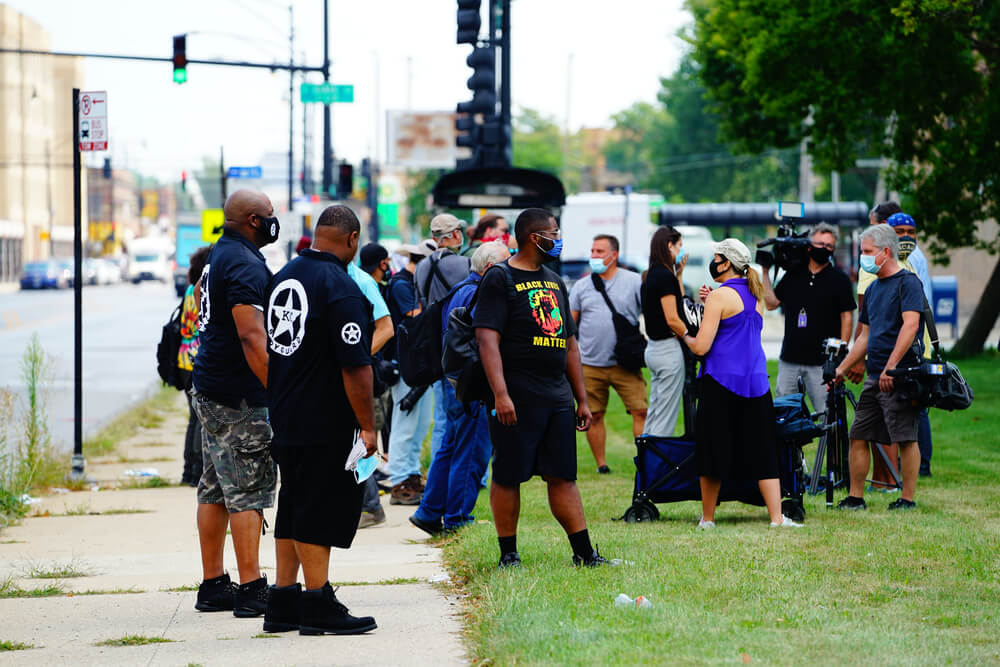



Get new exclusive access to healthcare business reports & breaking news




As the entire world suffers from getting a hold on the coronavirus outbreak, the Black and Latino communities in Chicago have been disproportionately affected by the pandemic.
While the virus may be color-blind, its impact is not; and is affecting more African Americans and Latinos.
According to the COVID tracking project, In the US, Black people are dying at 2.4 times & Latinos are dying at 1.2 times the rate of white people.
Moreover, there are certain gaps in the actual data because of the dependence on local agencies. They lack the resources to investigate and report each individual who is affected by COVID-19. This inability to get the accurate count has some real implications on how the state health officials respond to the pandemic.
According to a Washington news agency, Latinos account for 24% COVID cases in Iowa though they are just 6% of the population. Moreover, they make only 13% of the population in Washington but contribute to 44% of cases.
While inadequate medical care, type of occupation, living standards, and the underlying health conditions may be some of the reasons for this increase, the long-standing social inequalities have many racial and ethnic minority groups at an increased risk of COVID-19.
Some of the most common disparities in social determinants that have put the Black and Latinos at an increased risk of coronavirus include:
With limited healthcare access, these minority groups are not able to receive the right treatment on time.
Besides, factors like lack of transportation, child care, no paid holidays, language barriers, and cultural differences also contribute to their limited healthcare access. Sometimes, these groups also hesitate to seek medical help because they do not trust the Government and healthcare systems.
According to the Annie E. Casey Foundation, the minority groups of the Blacks and Latinos have unequal access to high-quality education.
This systemic issue leads to a lower rate of high school completion which eventually limits their future job options. Hence, they do not have the flexibility to choose their preferred jobs and end up taking jobs which may require a lot of physical exertion.
This also impacts their earnings as these jobs on average are underpaid. In such cases, they do not have the flexibility to leave their work and take leaves; otherwise, they will miss out on their income. Hence, they are not able to spend time on themselves, thereby putting themselves under an increased risk of COVID-19.
The racial and ethnic minority groups are often disproportionately represented in work settings. They work in sectors like transportation, food preparation, healthcare, or service industry jobs where physical distancing or online work is not possible. They come in close contact with other workers which increasingly puts them at a higher risk.
In addition, according to a research by Salud America, Latinos reached an unemployment rate of 18.2% due to COVID-19.
This has led to an increased level of stress and anxiety among them. Stress and anxiety are the most common causes of brain fog. It is essential to practice some tips on how to overcome brain fog anxiety to retain your mental health during this pandemic.
Blacks and Latinos are involved in poultry and meat processing units, and a large number of Latino migrants are hired to work in the meatpacking industry, which is one of the major contributors to COVID deaths.
Designating meatpacking workers as ‘essential workers’ has led to the reopening of a lot of plants, thereby exposing these minority groups to an improved risk of COVID-19.
The Chicago Tribune mentions that social distancing is a privilege for people living in a multigenerational home and crowded conditions.
The Black and Latino communities usually live in these situations, which makes it difficult for them to follow prevention strategies. In addition, the growing unemployment rates and lower incomes, impact them adversely and lead to a greater risk of COVID-19.
However, with the Pritzker Administration providing $75 million to Illinois Healthcare it is expected to see an improvement in healthcare facilities in Chicago.
The factors mentioned above have primarily contributed to the improved risk of COVID-19 on the Black and Latino communities. That said, the current pandemic has changed the way we live, connect, and support each other.
With equal and fair treatment, just opportunities for all, working for the marginalized people, and other positive steps, we may be able to witness a decrease in the number of COVID cases.
With community and faith-based organizations, access to healthcare systems, affordable testing, and timely support, we might be able to prevent the rampant spread of COVID among these minority groups and protect their health.